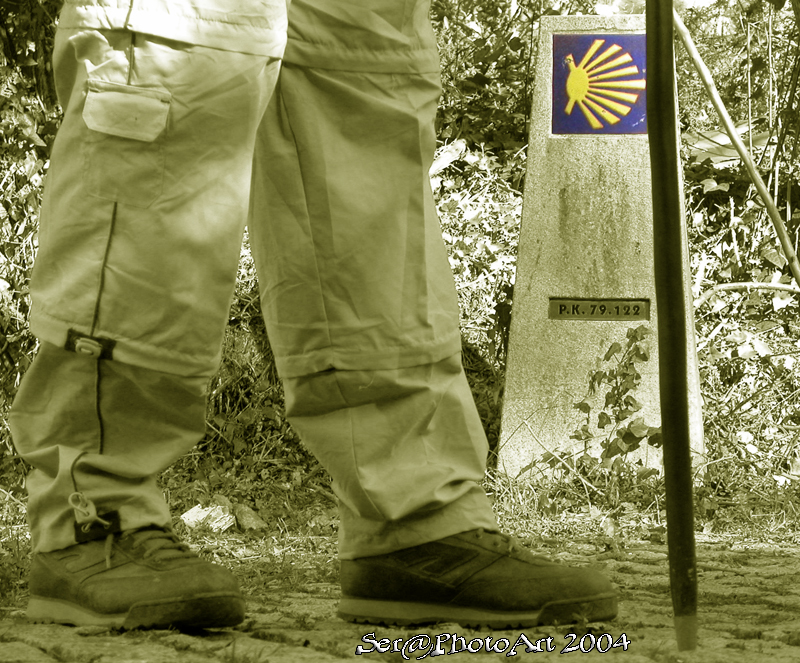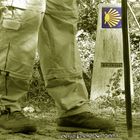Caminante no hay camino...se hace camino al andar.
La historia del Camino de Santiago se remonta a los albores del siglo IX con el descubrimiento del sepulcro de Santiago el Mayor, evangelizador de España. El hallazgo de este santo mausoleo está rodeado de una rica imaginería popular que en vez de distorsionar ha preservado y llenado de colorido la narración histórica.
Una de estas leyendas populares sitúa el extraordinario suceso en la primitiva diócesis de Iria Flavia, cuando el ermitaño Pelayo tuvo una "revelación divina": en la espesura del bosque ve unas "luminarias" y "oye canciones de ángeles". Los feligreses de la antigua iglesia de San Félix de Solobio, al pie del bosque, participan de esas visiones.
-------------------------------------------------------------------------------------------------------
The history of the Route to Santiago dates back to the beginning of the 9C, when the sepulchre of Santiago el Mayor (James the Greater), evangelist in Spain, was discovered. The facts concerning this find have been embellished by people´s imagination, without distorting reality, so that they become more poetic.
One of these legends is the one that locates the extraordinary event in the former diocese of Iria Flavia, when the hermit Pelayo had a "divine revelation" in the deep of the forest. He sees "altar lights" and hears "angels singing". The parishioners of San Félix de Solobio, at the foot of the forest, announced the event. The bishop Teodomiro went in the forest, found the mausoleum and identified it as the Apostle Santiago´s tomb.










SeraPhotoArt 08/05/2012 20:48
Thanks Alexander :)Alexander Rützel 08/05/2012 19:20
Nice, good idea!